Photo

For years, a mysterious figure preyed on gay men in Atlanta. People on the streets called him the Handcuff Man—but the police knew his real name. @atavist issue no. 149, “The Devil Went Down to Georgia,” is now live:
No one could be certain when the Handcuff Man had staged his first attack. Adamson claimed that he’d been terrorizing Midtown since the late 1960s, that he drove a white Lincoln, was about five foot ten, and had black hair and glasses. A sex worker said that the Handcuff Man had picked him up in Piedmont Park in 1977, asked him to take shots of liquor, then assaulted him. The victim managed to flee with a stab wound to the shoulder, and later saw the man again at the park eyeing other male hustlers. He didn’t report the crime because he was afraid of being outed to loved ones.
In 1984, Susan Faludi, then a twentysomething reporter a few years out from becoming a Pulitzer Prize–winning author, wrote a front-page story about gay hustlers for the Atlanta Journal-Constitution. She asked her sources about the dangers of their lifestyle and learned that “the greatest fear on the street right now is invoked by the specter of ‘The Handcuff Man,’ a man who reportedly picks up hustlers, offers them a pint of vodka spiked with sleeping pills and then handcuffs and beats them.”
520 notes
·
View notes
Photo

Two scammers, a web of betrayal, and Europe’s fraud of the century. Issue no. 148, “Watch It Burn,” by Jessica Camille Aguirre, is now live:
The scam would help Daphne accrue even more money, and it would make him famous. In the media he cut a dashing figure, partying with celebrities and oligarchs. He maintained his slim physique by avoiding carbohydrates like they were venom and dressed in blazers cut from blue velvet or embroidered with shimmering brocade flowers. He liked to wear a diamond-encrusted Chopard sun pendant on his partially bared chest and was rarely photographed without one of his hundreds of pairs of Tom Ford sunglasses, all aviator-style with gradient lenses. Always, it seemed, he had a cigarette hanging out of the side of his mouth.
Reporters dubbed Daphne the “prince of carbon,” but it wasn’t just his flamboyant charisma that elevated him to criminal royalty. So did the nature of his new fraud. Daphne was scamming the fight against climate change by exploiting a policy flaw that left billions for the taking.
622 notes
·
View notes
Photo


Ayahuasca, fortune-tellers, a heroic dog, and more: Inside the race to find four children who survived a plane crash in the Amazon. “Mayday,” issue no. 147, is now available:
Disoriented, Lesly unbuckled her seat belt and wrenched Cristin from her mother’s arms. She used one of the baby’s diapers to stem the flow of blood coming from her head. The smell of fuel filled her nostrils. Debris was scattered everywhere. Lesly saw that Hermán Mendoza and Hernando Murcia were dead, but that Soleiny and Tien were unharmed.
With Cristin in her arms, Lesly led Soleiny and Tien out of the plane. A few yards away, she built a makeshift camp, stringing up a towel and a mosquito net to keep the constant rain and bugs at bay. Then the four children waited to be rescued. Tien kept asking when their mother would wake up. Lesly worried that her brother was too young to grasp the concept of death, so she said she didn’t know.
No one came for them, and Lesly knew it wouldn’t be long before predators arrived, attracted by the bodies. So she gathered a few of Magdalena’s clothes, some farina she found in Mendoza’s bag, and juice, soda, and candy from elsewhere on the plane. She salvaged a few other items that seemed useful: scissors, a first aid kit, diapers, a baby bottle. Then she led her siblings west, using the sun as their guide.
888 notes
·
View notes
Photo

An ob-gyn in Virginia performed unnecessary surgeries on patients for decades. He took their reproductive organs, gave them false cancer diagnoses, and did other terrible harm. When his victims learned the truth, they fought back. Issue no. 146, DAMAGES, is now available:
[Debra] requested her medical records and was stunned to find discrepancies with what Perwaiz had said to her during appointments. Most glaringly, she didn’t see any mention of precancerous cells on her cervix; the tests Perwaiz performed on her had come back normal. “If I was normal,” Debra said, “why did I have a surgery?”
There were other inconsistencies. One form from an appointment described Debra complaining of back and pelvic pain, which she told me she never did. Another document dated the day before her surgery stated that she “insisted on having those ovaries removed through the abdominal wall incision and not vaginally,” and that the “consent obtained after entirely counseling the patient [was] for abdominal hysterectomy.” In fact, she had requested the opposite surgical approach, and she recalled no such conversation with Perwaiz; the only time she’d spoken with him in the lead-up to her procedure was in passing in the hospital hallway.
Debra was sure she had a malpractice case. She went to several lawyers, but none of them would take her on as a client. “So many men—man after man saying, ‘You had a decent amount of care, and that’s all you’re afforded,’ ” she said. Frustrated, she came up with a new plan: “I said, ‘Alright, I’m going to learn how to sue this bastard myself.’ ”
#atavist journalism healthcare medicine doctors medicalmalpractice reproductivehealth racism justice virginia truestory#cancer women womenshealth history
817 notes
·
View notes
Photo

Did a father of five fake his own death? And what’s Bigfoot got to do with it? Read “The Truth Is Out There” (issue no. 45) to find out:
Bruce considers himself a cryptozoologist, someone who searches for and studies animals whose very existence is disputed. Unlike some of the more eccentric types in the field, Bruce is organized and methodical. He has published papers every bit as dry as those in other areas of study—they just happen to be about relict hominoids, sea serpents, and lake monsters.
His specific obsession with Bigfoot began when he was a kid, more than 50 years ago. In fact, it was right around the time his father disappeared. Bruce is reluctant to allow that the two things might be connected, but it’s hard to see it any other way.
Bruce hasn’t looked for the truth about what happened with his father nearly as hard as he’s looked for Bigfoot. Still, the truth keeps finding him and his family. Over the past five decades, revelations about a man who left home one day and never came back have taken Bruce and the rest of the Champagnes by surprise—again and again and again.
452 notes
·
View notes
Photo




As Russia invaded Ukraine, three women from the same family became pregnant at the same time. Then the war tore them apart.
Atavist issue no. 143, TWO THOUSAND MILES FROM HOME, is now available.
If Lida were to tell these babies a story instead of singing a song, how might she start? Perhaps like this: There were three women—Liuda, Lida, and Lera. They were from two generations of the same family; they lived a few miles from one another, and they all became pregnant just a few weeks apart. But a war came between them and divided them from one another. One of them traveled 2,000 miles to come home; another was lost.
No. That story gets too sad too quickly.
Perhaps she could start like this: There is the story about David and Goliath. Little David went out to fight the giant Goliath, who threatened to destroy David’s whole nation. And everyone thought that Goliath would win in three days, but little David would not be defeated.
Yes, that’s a better way to begin.
371 notes
·
View notes
Photo




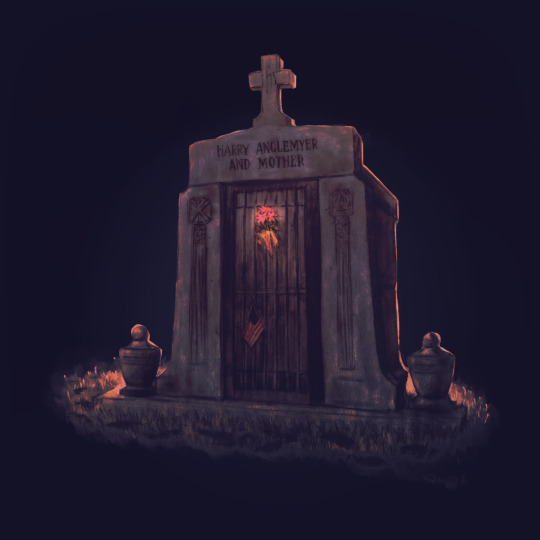
Copper Kettle sold the best fudge on the Jersey Shore—and after its owner's body was found stuffed in a car, his murder went unsolved for decades. Things change, though.
Atavist issue no. 143, WHO KILLED THE FUDGE KING?, is now available.
But a cohort of Ocean City residents insisted that the answers were right there for anyone who bothered to look. They believed that a toxic brew of prejudice, rage, and power had doomed the Fudge King.
I agreed, and thought that the story might make a great screenplay—a kind of South Jersey noir or David Lynch fantasia, where the flowers are pretty above the surface but gnarly worms lurk just below. Yet, soon I was hooked more deeply by the story of a fellow gay man living a relatively out life in the town where my family had spent our summer vacations. Someone whose reward for trying to yank Ocean City into the future was to become a target of hate and hypocrisy.
610 notes
·
View notes
Photo



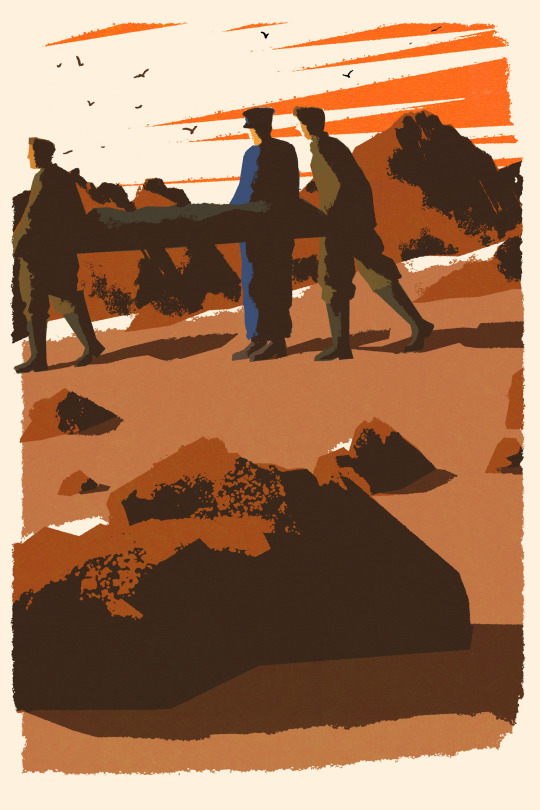
Fourteen U.S. destroyers barreled down the California coast in a dense fog—until a wrong turn led to the largest peacetime disaster in American naval history.
“Dead Reckoning,” issue no. 142 from The Atavist, is now available.
Two boats behind the Delphy on the Young, William Calhoun still couldn’t make out the lights from Point Arguello. Perhaps the fog was too thick, or the Young too far from shore? But he did see the lights of the Delphy and the S.P. Lee, just ahead, and some of the other ships behind. So he continued to follow the leader.
Then came a jolt to the ship—not so much heard as felt, a slight trembling in the hull. At once, Calhoun thought they’d been rammed, but by what? He rushed to the bridge just in time for a second jolt. There was nothing slight about this one. The Young’s navigator had lurched out of the formation—technically the correct reaction for a ship running aground—only to slam into something harder.
Right away the Young started to list, its engine room filling with water through a gash in the hull. It took just seconds for the entire destroyer to lean about 30 degrees. Then the power went out. Between the darkness and the fog, no one could see a thing. By the time Calhoun ordered his executive officer, Lieutenant Eugene Herzinger, to pass the word to stand by to abandon ship, the ship was listing nearly 45 degrees. This meant that the lifeboats were no longer an option—they were completely submerged.
414 notes
·
View notes
Photo
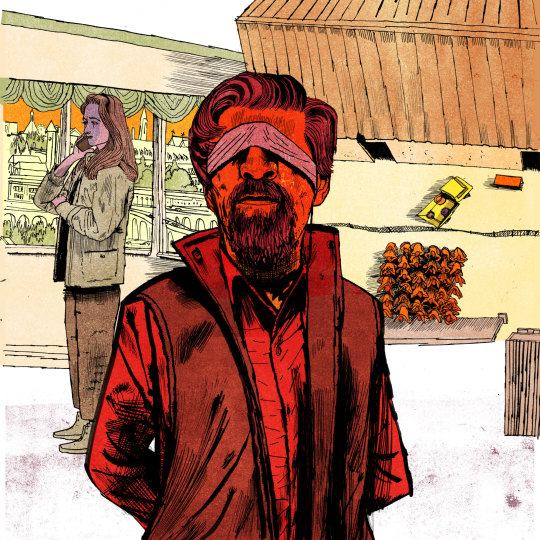
A filmmaker was producing a documentary series on the Iran hostage crisis. Then her father went missing overseas.
“Held Together,” issue no. 141 from The Atavist, is now available. Two authors, one incredible story.
On almost every trip through the city, our security team had been wary of men in white cars. The significance of the color was hard to decipher—maybe it indicated undercover police—but their worry was intense and constant. When looking for a spot to launch the drone over Al Mabani, for instance, they’d abandoned several options after white cars were seen nearby.
Now, about halfway to the restaurant, there were suddenly white cars all around us. Our driver wheeled into the thick of Sunday evening traffic to turn around, then floored it, intending to dash back to the hotel. We didn’t get far. In a roundabout below an overpass, there was a crash to the right side of the van. We came to a stop.
“They’ve got guns,” Mea said.
218 notes
·
View notes
Photo

His mother got duped by a man who claimed to love her—so he headed to Nigeria to find the con artist who broke her heart. A rare look inside the world of the so-called Yahoo Boys.
The Romance Scammer on My Sofa. The latest incredible true story from The Atavist.
8K notes
·
View notes
Photo

His mother got duped by a man who claimed to love her—so he headed to Nigeria to find the con artist who broke her heart.
The Romance Scammer on My Sofa. The latest incredible true story from The Atavist.
13K notes
·
View notes
Photo

A romance scammer conned my mom. I went to Nigeria to find him.
“The Romance Scammer on My Sofa,” issue no. 140 from The Atavist Magazine, is now available:
In Nigeria, Yahoo boys are online fraudsters. Their nickname comes from the email service Yahoo, which became popular in Nigeria in the 2000s, and they are descendants of the infamous 419 scammers, who, first with letters, and later in emails, promised to help strangers get rich for a nominal advance fee. (The number is a reference to a section of the Nigerian criminal code pertaining to fraud.) Biggy is a particular kind of Yahoo boy: a romance scammer who pretends to be other people online to seduce foreigners into trusting him and giving him money.
Biggy’s game is all about intimacy. He invests time in building what seems like a real relationship with his victims. He flatters them, tells them jokes, asks intimate questions. “The most important thing about being a Yahoo boy is keeping the conversation alive,” Biggy told me. “Dating is all about patience. It takes a long time before a client starts trusting you.”
Yahoo boys, I was learning, love euphemisms.
Biggy estimated that over his ten years—and counting—as a romance scammer, he’d lined his pockets with $30,000 from people he conned. People yearning for love. People like my mother.
775 notes
·
View notes
Photo


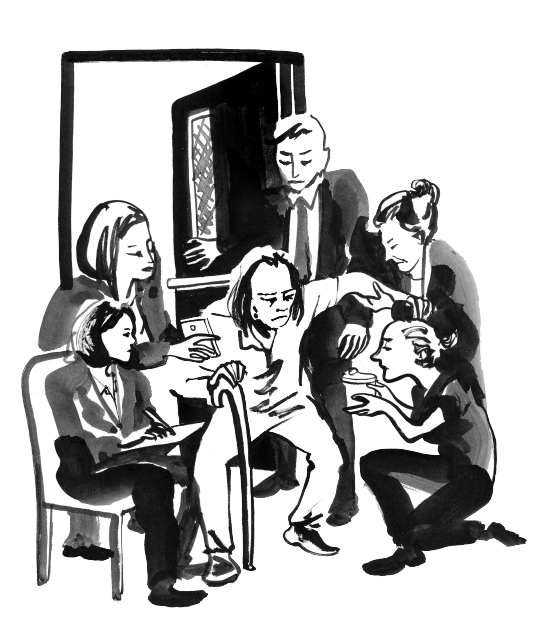
In April 2018, a blind man with one foot robbed a bank in Austin, Texas. This is a heist story—but unlike any you’ve ever read.
Check out Atavist’s featured archive story, The Desperado:
He’d spent weeks in front of his computer trying to discern the text of search results and figure out what to do about his eye, his foot, his diabetes, his stroke. He looked into the possibility of getting some kind of private insurance. That was a dead end. The companies wanted a lot of money—the premiums he saw quoted were several hundred dollars each month, which he didn’t have. He looked into whether he might qualify for government disability or Social Security benefits but realized that, even if he did, the process could take months.
Well, he thought, I’m screwed.
Then he found a decades-old article about a homeless man who robbed a bank because he had health problems and couldn’t get insurance or a job. In prison, the article said, the man was getting decent care.
What the hell? Averill thought. Then again, it didn’t seem like such a bad idea: commit a crime, get free medical assistance.
26 notes
·
View notes
Photo
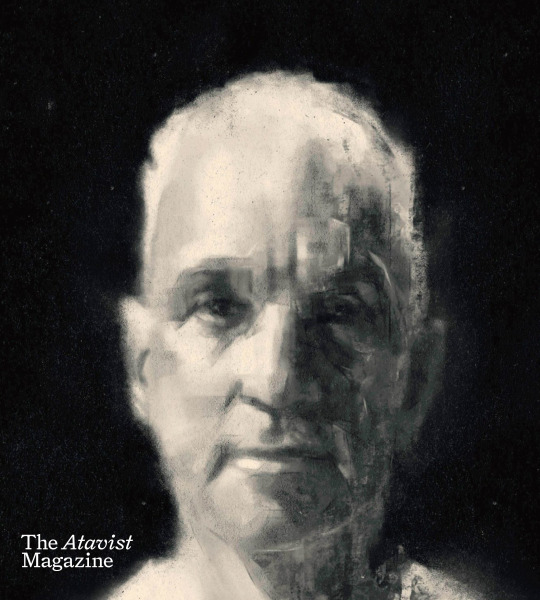
Gary Settle has helped dozens of federal prisoners get compassionate release—all while serving his own 177-year sentence. Will it ever be his turn to go home?
The Quality of Mercy. The latest incredible true story from The Atavist.
29 notes
·
View notes
Photo

Gary Settle has helped dozens of federal prisoners get compassionate release. Will it ever be his turn to go home?
The Quality of Mercy. The latest incredible true story from The Atavist.
#vaccines #sanfrancisco #truecrime #longreads #journalism
13K notes
·
View notes
Photo

Gary Settle has helped dozens of federal prisoners get compassionate release, all while coping with his own terminal cancer diagnosis. He’s serving a mandatory minimum of 177 years for armed robbery. Will it ever be his turn to go home?
Issue no. 139, “The Quality of Mercy,” is now live:
Sometimes Settle slipped into dark moods. He was serving a life sentence with a life-limiting illness, and he was surrounded by people in a similar position. It was a lot to bear. “Anxious and impatient could be my middle names,” he said.
He tried to stay busy, even while undergoing cancer treatment. He worked on compassionate release motions for his neighbors and spent time on his own case, hoping to help Team Gary. He sent Welch a copy of his medical records—even though she already had them—highlighting what he considered the most important parts. He kept track of side effects from his treatment, including mouth sores, debilitating fatigue, and a numb left leg, so that no one could claim he was tolerating it well. He counted how many pills he took: 39 on most days, 51 when he had chemo. He had never slept comfortably in prison, and the steroids he was now taking didn’t help. He made sure to exercise and drink plenty of water, but eating healthy could be challenging: According to Price, the prison gave Settle only one piece of fruit—a banana—per week, and the “salad” on offer was just lettuce.
691 notes
·
View notes
Photo

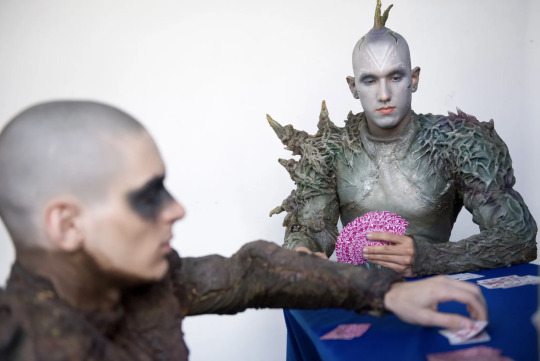
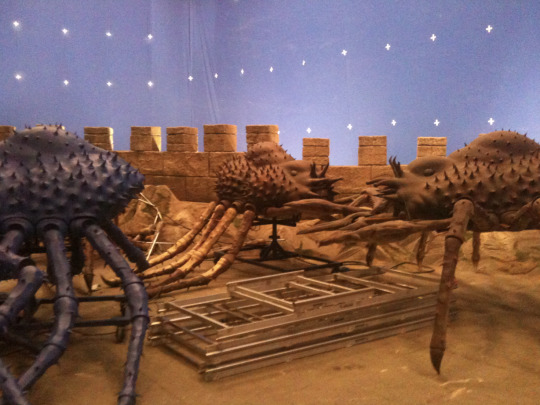
How a Chinese billionaire’s dream of making an underwater fantasy blockbuster turned into a legendary movie fiasco.
Check out Atavist’s featured archive story, SUNK:
As Jiang imagined it, Empires of the Deep would tell the story of Atlas, the son of the sea god Poseidon. Atlas is depicted as a pure-hearted young man who is restless and unsure of his own destiny. He has an alter ego, the swashbuckling Silver Eye (think Batman vis à vis Bruce Wayne), who appears during moments of peril. During a celebration in Atlas’s village in ancient Greece, an invading army of mermen knights riding on the backs of giant crabs captures Atlas’s adoptive father, General Damos. A 90-foot-tall lobster absconds with a holy temple—the Temple of Poseidon—in its claws.
Atlas and his drunken, lusty sidekick, Trajin, then embark on a quest across the sea to find Damos and retrieve the temple. On the way they stumble onto Crab Island, where in a mysterious palace they encounter bewitching women, including the beautiful princess Aka, who lure men into bed and kill them after making love.
1K notes
·
View notes